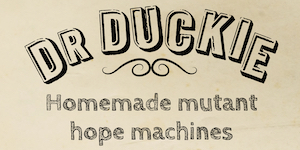“To talk about Camp is…to betray it,” wrote Susan Sontag. Chance would be a fine thing. There wasn’t a whole lot of talking about camp at the ICA’s Notes on Camp panel event on Wednesday night. By rights, it should have been called Notes on Neo-Camp, since it offered ruminations on the recent exhibition of that name and its immediate context, basically to the exclusion of the broader inquiry into camp in contemporary art and popular culture that was billed. This was frustrating because while camp is an endlessly fascinating subject, I didn’t find neo-camp (with which I was previously unfamiliar) a particularly persuasive or engaging proposition.
Chaired by Gavin Butt (a friend and colleague of mine), the panel comprised Chris Sharp, Daniel Sinsel and Ellen Fleiss. Sharp coined the term neo-camp in this article for Kaleidoscope and curated the subsequent exhibition Notes on Neo-Camp, which included work by Sinsel and was pretty unfavourably reviewed by Fleiss.
Susan Sontag’s 1964 essay Notes on Camp remains the touchstone of writing on the subject and was the starting point for the discussion – half a century later, how far does the concept need to be reevaluated? Butt suggested three factors that might make it hard to conceive of camp in the same way now as then: the evaporation of public faith in the sincerity of public (particularly political) speech; the mainstreaming of trash culture; and the enshrinement in law of LGBT rights. So far, so good. But then came a whole lot of neo-camp.
And just what is neo-camp? Sharp seemed to suggest that it’s art with a prominent affinity for artificiality, metaphor and euphemism, using a coded language of representation, marked by restraint or concealment or perhaps exaggeration and often redolent of Victoriana. I wasn’t quite clear what he was getting at – isn’t all art metaphor? – so I read his article after the event. I was even less clear after that. The arguments seemed to me frequently flimsy or muddled and sometimes wrong; both novels and grottos came into their own well before the Victorian era, for instance. And the idea of a “post-homosexual” conception of camp seems to be an exercise in deracination that flirts with the absurd if not the offensive.
In its bad-taste chutzpah, this deracination is probably the campest thing about the whole Notes on Neo-Camp project. It’s also the crux of Fleiss’s reservations. In her review, she takes the exhibition to task for skipping straight from Sontag to the present, bypassing the AIDS crisis and the work of ACT UP, “the campiest of direct action organizations”. It should go without saying that camp is notoriously hard to define – “in the eye of the beholder”, as Butt put it. But, as Sontag suggests, “It’s not all in the eye of the beholder”. And the images Fleiss used to illustrate her point during the panel, like the iconic one below, seem to me not to be camp at all.
Nor, from what he showed us, did much of Sinsel’s work, including the image at the top of this post. It was delicate, witty and hyperaestheticised, with strongly gestural and fetishistic elements, sure. But like most of the other neo-camp pieces shown, it wasn’t really exuberant, winking, grotesque, mischievous or… What’s the word… Oh, yes: funny. The whole event, indeed the whole neo-camp enterprise, seemed to suffer from a critical dearth of funny that, at least for me, put it out of camp’s remit altogether, prefix or no. (One notable exception: a kimono with John Travolta’s face on the back.)
The real shame of all this was that camp is surely ripe for revival. As Butt pointed out, the large and noticeably youthful audience suggested a substantial appetite for discussion of camp as it operates in culture today. Yet Sharp, Sinsel and Fleiss seemed to take for granted the highly dubious notion that conventional camp is played out, absent from living culture; when, during the Q&A, stimulating audience questions broached subjects like camp in live art and performance, camp as a mode of behaviour or mainstream gay culture’s perception of camp as liability, they were unwilling or unable to engage. The whole thing felt a bit like an attempt to co-opt camp as a way of describing other kinds of work while ignoring the ongoing, albeit mutated currency of its conventional uses and diminishing the flouncy, absurd and irreducibly queer impulses at its core.
And camp is out there in contemporary art. There are artists, like my friend Michael Pybus, who inventively embrace the camp potential of hypercelebrity, hypercommodification and online consumption habits, and the tensions between digital and manual imagemaking. To my mind, images like this are the real face of twenty-first century camp:
Shall we give Sontag the last word? “It’s embarrassing to be solemn and treatise-like about Camp. One runs the risk of having, oneself, produced a very inferior piece of Camp.”


